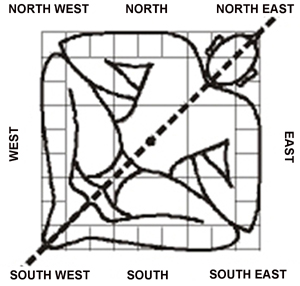Concept of Vaastu - The Building Code of Ancient India

Background
Universe and Man
Understanding that early Indians had about the universe and its relationship with man is an important factor in the evolution of Vastu Sastra. One can get this information from ancient Hindu texts. As per these texts,
- As is the atom so is the universe
- As is the human body so is the cosmic body
- As is the human mind as is the cosmic mind.
This clearly indicates that ancient Indian believed every thing in this world is a reflection of the nature of the universe in its own scale. The extension of this concept to the building design provided the basis for Vastu Sastra. To maintain the harmony in the universe it is essential to keep the above pattern unaltered. Therefore any creation by man needs to comply with this rule. A house or a building forms part of the chain of links between universe and the man. The logical conclusion derived from this was to design the building to reflect the nature of the universe. How Indian perceived the universe?
Read more about Vastu Sastra
- Vastu Shastra
Vaastu Shastra deals with various aspects of designing and building living environments that are in harmony with the physical and metaphysical forces / energies of the cosmos such as the gravitational, electromagnetic and supernatural. Building pract - Vastu Shastra: An Introduction
The Vedic and the Agamic traditions of ancient India always held that the microcosm is but a reflection of the macrocosm. A dwelling is an ecological unit, a microcosm which reflects the macrocosm, it is influenced by the same elements, it follows th - What is Vaastu Sastra
Explains the basics of vastu sastra. - Vastu Shastra
The most ancient science of architecture that goes back to the Vedic ages, it is composed of specific rules and regulations, set down by sages of those times, that an architect / builder / owner was expected to religiously follow to avoid coming unde




